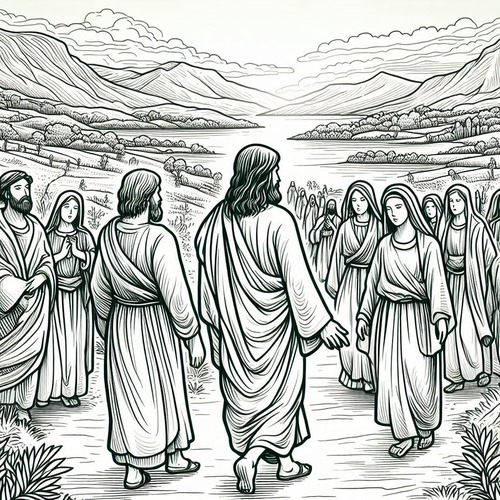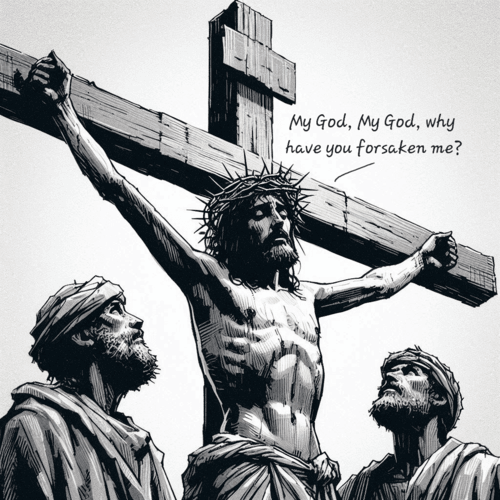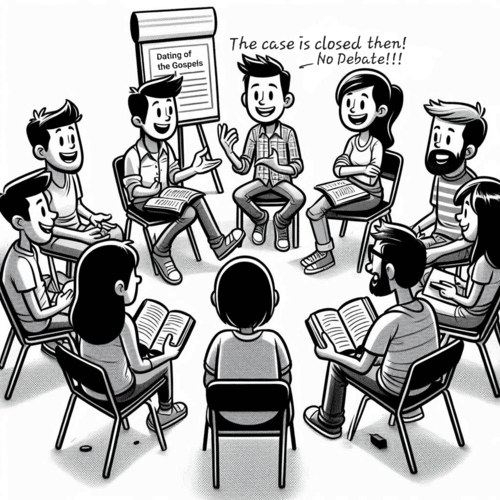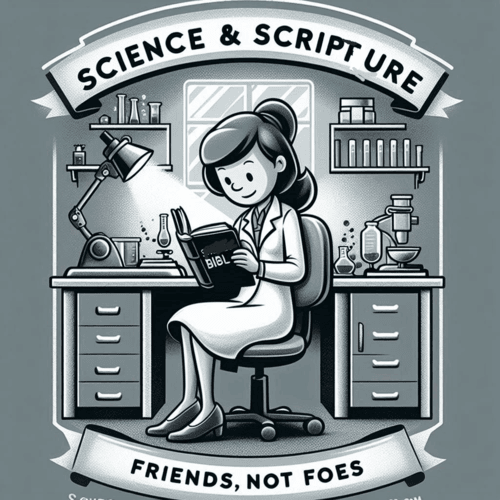Why Do We Affirm Scripture’s Essential Clarity?
SCEPTICS ASK: WHAT ABOUT ALL THOSE ‘DIFFICULT’ TEXTS?
“If the Bible is so clear,” the sceptic challenges, “why do scholars spend lifetimes debating what it means? Why are there so many passages that even experts find difficult to understand?” It’s a fair question that strikes at the heart of the Reformed doctrine of Scripture’s perspicuity—its essential clarity. The existence of genuinely difficult Bible texts seems to undermine any claim that Scripture is clear enough for ordinary believers to understand.
But does it really? The Reformed tradition has wrestled seriously with this challenge and emerged with a nuanced, biblically grounded response that not only addresses the “difficult texts” objection but actually strengthens our confidence in Scripture’s accessibility.
GETTING PERSPICUITY RIGHT
The problem often begins with a misunderstanding of what perspicuity actually claims. The doctrine of Scripture’s essential clarity does not mean every verse is immediately obvious to every reader. Rather, it affirms the central truths necessary for salvation and Christian living are accessible to ordinary believers who approach Scripture with faith and the Holy Spirit’s guidance.
The Westminster Confession puts it precisely: “All things in Scripture are not alike plain in themselves… yet those things which are necessary to be known, believed, and observed for salvation, are so clearly propounded… that not only the learned, but the unlearned, in a due use of the ordinary means, may attain unto a sufficient understanding of them.”
This isn’t a claim about universal simplicity but about essential accessibility. Think of it like a well-designed city map. While some streets and neighbourhoods may require careful study to navigate, the main thoroughfares that get you where you need to go are clearly marked. Scripture works similarly—its central message about God’s redemptive work in Christ shines clearly throughout, even when some passages require more careful attention.
The Bible supports this understanding. Moses told Israel God’s word was “not too difficult for you, nor is it far off” (Deuteronomy 30:11). The psalmist declared God’s word “a lamp to my feet and a light to my path” (Psalm 119:105). Paul assured Timothy Scripture is able to make one “wise for salvation” and is sufficient for every good work (2 Timothy 3:15-17). These passages assume God’s people can understand what they need to know from His word.
WHY DIFFICULT TEXTS EXIST
Remarkably, Scripture itself acknowledges some passages are hard to understand. Peter admits some of Paul’s writings contain “things that are hard to understand” (2 Peter 3:16). Jesus deliberately spoke in parables that both revealed and concealed truth (Matthew 13:10-17). The Ethiopian eunuch needed Philip’s help to understand Isaiah’s prophecy (Acts 8:30-31).
Rather than undermining perspicuity, these examples actually support it by showing us what biblical clarity looks like in practice. Several factors contribute to textual difficulty without compromising essential clarity.
- We face cultural and historical distance. Ancient Near Eastern customs, languages, and contexts naturally require study to bridge the gap between then and now. When Paul discusses head coverings or meat sacrificed to idols, modern readers need help understanding the cultural background.
- Scripture employs various literary genres, each with its own interpretive challenges. Apocalyptic visions, Hebrew poetry, and ancient legal codes all require different approaches than straightforward narrative or doctrinal teaching.
- Progressive revelation means earlier passages are sometimes clarified by later ones. Old Testament ceremonial laws, for instance, become clearer in light of Christ’s fulfillment of them in the New Testament.
- Some theological truths push the boundaries of human comprehension—the Trinity, for instance, or the relationship between divine sovereignty and human responsibility. These mysteries humble us while still communicating essential truths about God’s character and work.
WHY AFFIRM SCRIPTURE’S CLARITY: THE REFORMED RESPONSE
The Reformed tradition offers a robust, four-fold response to the “difficult texts” challenge.
First, the central versus peripheral distinction. Core gospel truths appear consistently and clearly throughout Scripture. The message that sinners are saved by grace through faith in Christ’s atoning work is proclaimed from Genesis to Revelation in language accessible to any sincere seeker. More peripheral matters—important as they may be—can afford to require more careful study without compromising Scripture’s essential purpose.
Second, the community and means of grace. Perspicuity operates within the covenant community, not in isolation. The Spirit works through preaching, teaching, and corporate study to illumine Scripture’s meaning. God has given the church pastors and teachers precisely to help believers understand his word (Ephesians 4:11-16). This doesn’t create a priestly class that controls interpretation, but recognises that understanding grows through community engagement with the text.
Third, progressive illumination. The Spirit’s work of illumination is ongoing, not instantaneous. What seems difficult initially often becomes clearer through faithful study, spiritual maturity, and life experience. Learning to understand Scripture is like learning a language—basic communication comes quickly, but nuance develops over time through practice and growth.
Fourth, the sufficiency principle. Scripture provides everything necessary for faith and practice. Crucially, difficult passages don’t contain essential truths unavailable elsewhere in clearer form. The “rule of faith”—those central doctrines that guide Christian belief and life—emerges from Scripture’s clearest and most consistent teachings, not from its most obscure passages.
CONCLUSION: WHY AFFIRM SCRIPTURE’S CLARITY
Far from being embarrassed by difficult texts, the Reformed tradition sees them as part of God’s wise design. They humble us, drive us to careful study, and create healthy dependence on the Spirit and community. They prevent us from treating Scripture carelessly while building confidence in its essential accessibility.
When sceptics point to difficult passages, we need not retreat. Instead, we can confidently affirm Scripture’s essential clarity stands precisely because it can handle both complexity and accessibility. The ordinary believer, guided by the Spirit and supported by the community of faith, can find in Scripture everything needed for salvation and godly living—even while scholars continue to mine its inexhaustible riches.
The difficult texts don’t disprove perspicuity; they demonstrate its theological sophistication and pastoral wisdom.
WHY AFFIRM SCRIPTURE’S ESSENTIAL CLARITY: RELATED FAQs
How do we handle passages where even conservative commentators disagree? Theologians Kevin Vanhoozer and DA Carson distinguish between “bounded sets” (clear biblical boundaries) and “centred sets” (degrees of proximity to clear truth). They argue disagreement on secondary issues actually demonstrates perspicuity is working properly—scholars can debate peripheral matters precisely because the central gospel remains clear. This approach allows for theological diversity within confessional boundaries while maintaining confidence in Scripture’s essential clarity.
- What about passages that seem to contradict each other, like James and Paul on faith and works? Reformed hermeneuts, Thomas Schreiner and Douglas Moo argue apparent contradictions often reveal complementary perspectives on the same truth rather than genuine conflicts. The apparent tension between Paul’s “justification by faith alone” and James’ “faith without works is dead” actually demonstrates Scripture’s self-interpreting clarity—each passage illuminates different aspects of true saving faith. Modern Reformed scholarship increasingly sees such tensions as pedagogically intentional, driving readers to a deeper understanding.
- How does the doctrine of perspicuity handle modern critical biblical scholarship’s challenges? Leading scholars Michael Horton and Scott Swain acknowledge historical-critical methods can illuminate cultural backgrounds and literary structures. However, they maintain perspicuity operates at the level of Scripture’s intended theological message, not necessarily at every historical or scientific detail. They argue the Spirit’s illumination works through scholarly tools while transcending purely academic approaches to yield spiritual understanding.
Does perspicuity mean Bible translations are equally clear, or do some obscure the original meaning? Reformed translation theorists like Leland Ryken advocate for “essentially literal” approaches that preserve the form and content of the original text. They argue that while all major translations convey the gospel clearly, some translation philosophies (like extreme dynamic equivalence) can obscure important theological distinctions. Perspicuity assumes access to Scripture’s actual content, which may require comparing translations or, ideally, learning the original languages.
- How do we address the role of tradition in interpreting difficult passages? Theologians Carl Trueman and Ryan McGraw embrace a “tradition-informed” rather than “tradition-bound” approach. They see the historic creeds and confessions as reliable guides that emerged from careful Scripture study, helping contemporary readers avoid interpretive errors. Tradition serves perspicuity by providing tested interpretive frameworks. Scripture, however, remains the ultimate authority that can correct even venerable traditions when necessary.
- What about passages dealing with science, history, or other fields where biblical and modern knowledge seem to conflict? Scholars John Frame and Vern Poythress advocate for a “multi-perspectival” approach that recognises different types of biblical literature and communicative purposes. They argue perspicuity applies primarily to Scripture’s theological and moral teachings rather than to every statement that touches on natural phenomena. This allows for serious engagement with scientific findings while maintaining confidence in Scripture’s clarity on its central concerns.
How does the doctrine of perspicuity relate to the ongoing debates about gender roles, sexuality, and other contemporary issues? Reformed teachers like Kevin DeYoung and Denny Burk argue Scripture speaks clearly on core issues of human sexuality and gender, even when cultural pressures create interpretive complexity. They maintain perspicuity doesn’t eliminate the need for careful exegesis but provides confidence that Scripture’s moral vision is accessible to faithful readers. They distinguish between cultural applications (which may vary) and underlying biblical principles (which remain clear and binding).
WHY AFFIRM SCRIPTURE’S ESSENTIAL CLARITY: OUR RELATED POSTS
Editor’s Pick

Unsung Witnesses: How Minor Characters Validate Gospel Accounts
In the grand narrative of Christ’s life, death, and resurrection, we often focus on the prominent figures—Jesus Himself, the 12 [...]
Can God Condemn Homosexuality Even If Some Are Born Gay?
Few questions challenge modern Christians more deeply than reconciling traditional biblical teaching on homosexuality with emerging scientific theories about sexual [...]

Washing of Feet: Are We To Apply John 13:14 Literally?
In the quiet moments before His betrayal and crucifixion, Jesus knelt before His disciples and performed an act so countercultural [...]

The Paradox of Prayer: Why Ask When God Already Knows?
Ever caught yourself in the middle of prayer, wondering, “Why am I telling God things He already knows?” If God’s [...]

Inerrancy Vs Infallibility: Which Does Scripture Demand We Affirm?
When discussing the nature of Scripture, two terms often arise: inerrancy and infallibility. While they may both sound similar—even equally [...]

Why Does Jesus Cry, ‘My God My God’?
FROM OUR SERIES ON CHRIST’S SEVEN FINAL UTTERANCES FROM THE CROSS Of all the words Jesus spoke from the cross, [...]

Mass Hallucination: Does This Explain Resurrection Appearances?
The claim that Jesus rose from the dead is at the very heart of Christianity. Without it, as the Apostle [...]

The Easter Miracle: What John Saw at the Tomb that Sparked Faith
It's one of the most intriguing moments in the Gospel accounts of Jesus' resurrection. Two disciples, Peter and John, race [...]

Dating of the Gospels: The Case for Pre-70 AD Authorship
Few questions in biblical scholarship carry as much weight as the dating of the four Gospels. Were Matthew, Mark, Luke, [...]

Behemoth and Leviathan: Real Monsters or Symbolic Creatures?
In chapters 40 and 41 of the Book of Job, we encounter two of the most fascinating creatures ever described [...]






